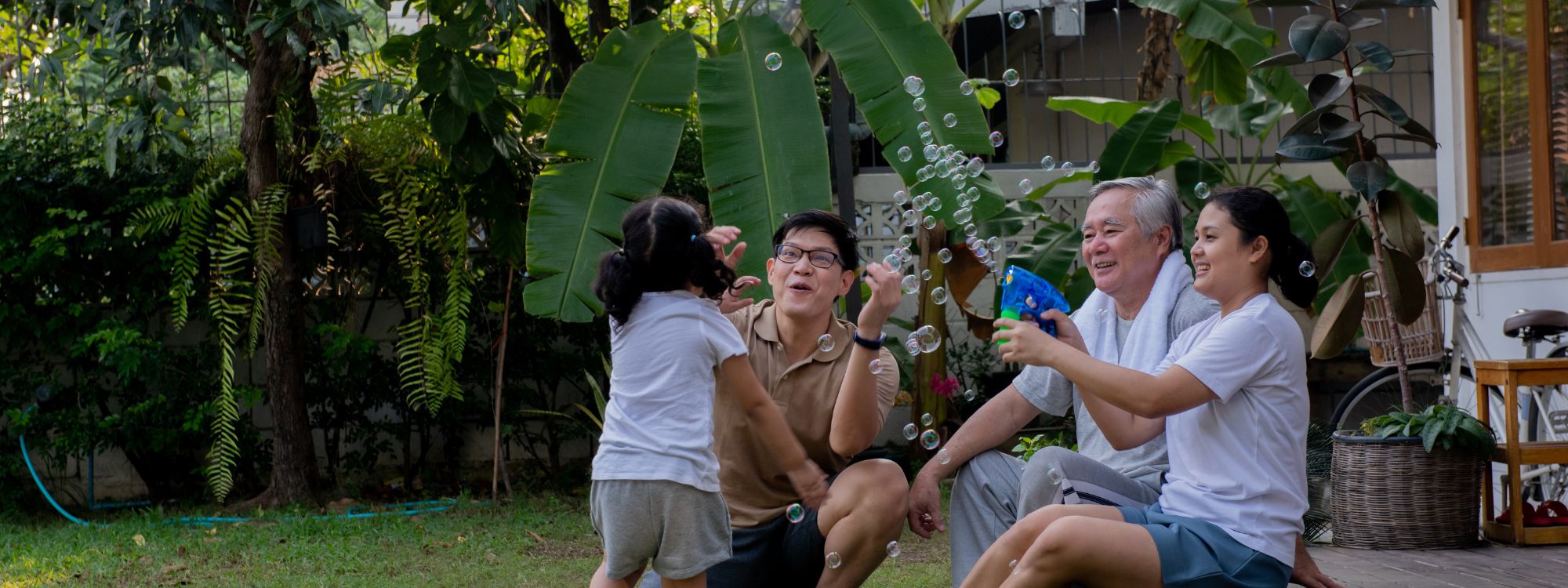Multigenerational housing, also known as shared or intergenerational housing, is an increasing trend across the US, having quadrupled in number since the 1970s, according to this Pew Research. This means that, for over 59 million Americans, the household includes multiple generations living under one roof, such as grandparents living with their adult children and grandchildren, or unrelated individuals of different ages sharing a home.
Financial burdens, changes in demographics, the rising cost of living, and the Covid-19 pandemic have accelerated this process, often translating into overcrowded homes that were initially designed for a nuclear family or a smaller unit. Most of our housing stock hasn’t been historically designed for multiple generations under the same roof.
Climate Benefits of Multigenerational Housing
There are many familial benefits of multigenerational living—grandparents can take care of grandchildren, children can keep an eye on their aging parents, and young adults can save money while starting out in their careers.
This housing arrangement can also have a wide range of climate and economic benefits, including:
- Energy efficiency: Multigenerational housing can help to reduce energy consumption by allowing individuals to share common spaces, appliances, and utilities. This can lead to lower energy bills and a smaller carbon footprint.
- Transportation: Multigenerational housing can reduce the need for long commutes and car ownership by increasing density near transit areas in currently single-family home zones. This can have a positive impact on air quality and greenhouse gas emissions.
- Land use: Multigenerational housing can help to preserve green space and prevent sprawl by allowing individuals to live closer together and share resources.
- Sustainable building practices: When building or retrofitting multigenerational housing, it is possible to use sustainable building practices and materials, such as energy-efficient appliances, low-Volatile Organic Compound (VOC) paints, and insulation made from recycled materials.
The Problem: They Don’t Build Them Like They Used To
However, most housing is not built for multiple generations to cohabitate. According to the 2021 American Community Survey (ACS), 69.3% of America’s occupied households are single-family homes.
Nothing represents this concept as well as suburbs. The post-WWII years saw low vacancy rates, high rents, and overcrowding as soldiers returned home. Dissatisfaction fueled policymakers to find solutions, ultimately leading to an explosion of new housing thanks to the Federal Housing Agency (FHA) through its low-interest construction loans to builders, the mortgage insurance program, and long-term low-interest rate mortgages. In the book Crabgrass Frontier, Kenneth Jackson noted that the FHA and Veteran Affairs (VA) loans were preferential to the suburbs using requirements for standard setbacks, building materials, and lot sizes meant most urban and dense units didn’t qualify.
Now, it’s common for discourse around new housing development to be consumed by the height, size, and “character” of new buildings as well as how many units we can fit into a parcel. And yet, we don’t often hear how many single-family homes these days are large enough to fit multiple units. For example, in Tracy, in San Joaquin County, older single-family homes used to be 800-900 sq. ft, whereas more recently, in the Tracy Hills development, they can be up to 5,000 sq. ft. A house that size could fit four units rather than one.
At Greenbelt Alliance, we advocate for Climate SMART—Sustainable, Mixed, Affordable, Resilient, Transit-Oriented—developments to be both affordable and climate-resilient. Much of our housing advocacy is geared toward multifamily apartment buildings and condominiums. That’s why, in this new scenario, we need to advocate for diversification in types of housing within urban boundaries that allow us to safely accommodate this growing trend of multigenerational housing for those who want it.
So, How Can We Build More Multigenerational Housing?
Diversification and allowing for different types of housing are key for mid and long-term solutions.
As families continue to grow in California, they will have additional tools to modify their properties to fit their household style. Chief among them is the new Accessory Dwelling Unit (ADU) laws and the $100 Million CalFHA grants for ADUs. Ryan O’Connell, the founder of the company and website How To ADU, noted that despite these new tools and resources, constructing an ADU is still prohibitive. It’s imperative that cities make it as easy as possible to permit and build. For O’Connell, families should think of this process as a marathon rather than a sprint. As California continues to provide communities with more tools to adapt their neighborhoods, we will see a shift from car-centric, single-family home developments to family-centered designs where multiple generations can live and thrive.
Another great way to offer more options that suit different living arrangements is moving away from a detached single-family home monopoly and offering more Missing Middle Housing options, such as duplexes or triplexes. Among the financial benefits of this type of housing is price affordability by design, reduced transportation costs, reduced land costs, and smarter land use, and they provide a lower entry point for acquiring housing. Meanwhile, the social and health benefits that these designs incentivize are walkable neighborhoods with retail nearby and more space to develop parks and maintain open spaces where neighbors can recreate by themselves and with their children.
A report by AARP and Opticos Design found multiple benefits of Missing Middle Housing. These housing types, especially duplexes to sixplexes, can be used for multiple generations. Many older family members who bought cheaply in the suburbs and are on a fixed income, now find themselves stuck in place. The high value of their homes often isn’t sufficient to downsize in an amenity-rich area. A wide range of building types with 2-6 units would easily increase density while providing seniors, workers, young people, and families alike with smaller units they could afford.
Investing in Missing Middle Housing is one way to revitalize neighborhood commercial areas. It allows customers to live nearby shops and retail and provide more potential workers for downtown office areas (even if they only go a few times a week). Missing Middle Housing designs are also a great way to build multifamily homes without significantly demolishing or changing the building profile. It also provides an opportunity to retrofit the building with newer energy-efficient technology and shared utilities. This is by no means a panacea but it can transform communities by starting with the family unit and designing cities for the human and family scale.
In the post-Covid world, investing in diverse types of housing that embrace different types of living arrangements, such as multigenerational housing, can have economic benefits beyond the home itself. To unlock this potential, cities across the state will need to embrace new state laws—such as SB 9, SB 897, and AB 916—which make building it easier to build.





